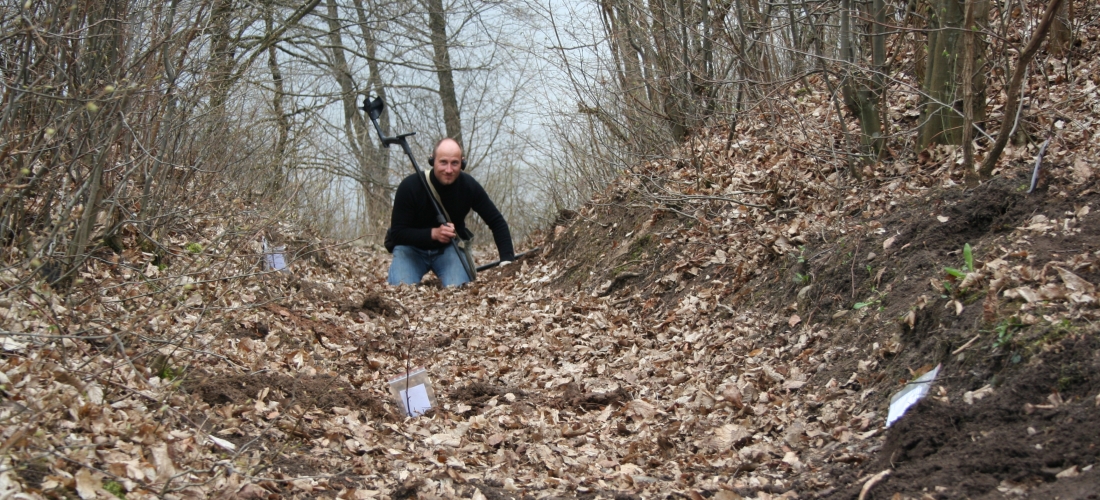Early in the spring of 2014 an archaeological field survey using metal detectors was carried out in the settlement complexes at Skomack Wielki (Ostrów) and Szurpiły, led by M. Kamiński, with consultation from Project Team members dr M. Engel and C. Sobczak. The metal detectors were used in keeping with the requirements of non-destructive testing: the survey was limited to the uppermost layer of the topsoil to avoid disturbance to the cultural deposit. Objects discovered during this study were mapped in 3D on the coordinate grid PUWG 1992, with an accuracy of 1 cm, by M. Jaworski. The recovered artefacts were cleaned briefly, provided with labels and passed to the State Archaeological Museum in Warsaw for conservation.
In the settlement complex at Skomack Wielki (Ostrów) the focus of the survey was Góra Grodzisko (Hillfort Hill), the area at its foot, and smaller hummocks in its vicinity – 18 hectares in all. Jointly more than 1000 metal finds were recovered, 55 of them identified by specialists as archaeological objects dating to the Migration Period, early Middle Ages and the modern age.
In the settlement complex at Szurpiły the focus of the survey was Zamkowa Góra (Castle Hill), the area at its foot in the east and west, Kościelna Góra (Church Hill) and Cmentarna Góra (Cemetery Hill), as well as the area known as Mosiężysko – approximately 15 hectares. Of 400 objects recovered 234 were identified as archaeological artefacts, mostly dated to the early medieval period and the Roman Period.




